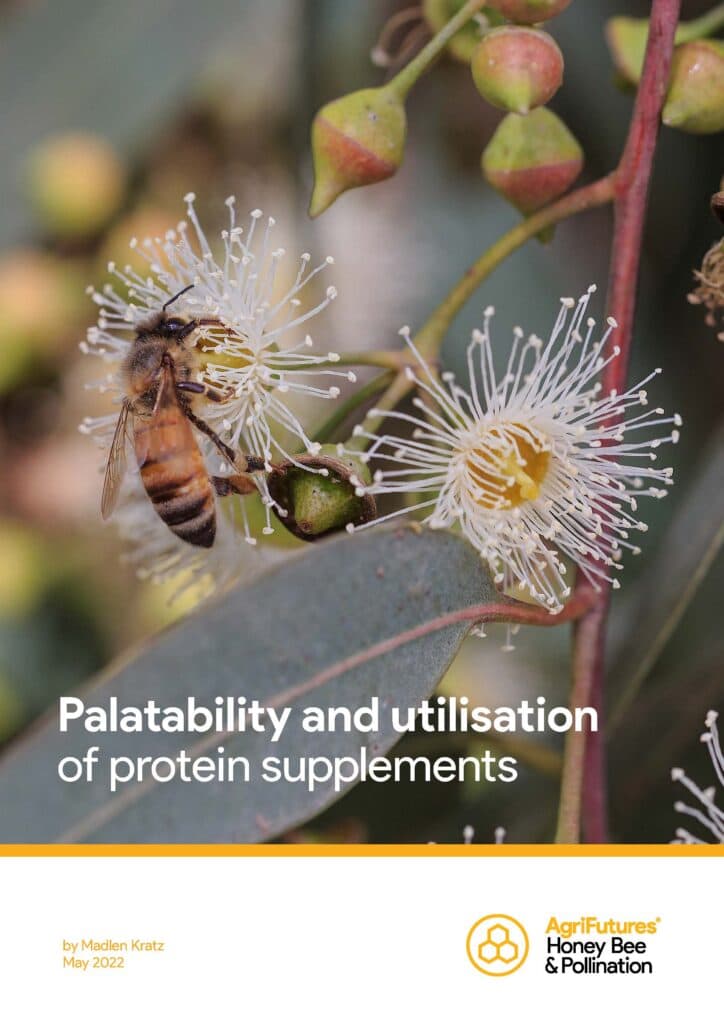Supplementary feeding can be a useful tool to either maintain or stimulate honey bee colonies. Yet, the effectiveness of supplementary feeding is often questioned by beekeepers. This study investigated the palatability of five commercially available supplements alongside two pollen sources and tested how honey bees use these within the hive. The findings indicate that:
1. Natural pollen is more attractive to honey bees than currently available protein supplements
2. Protein supplements differed in their attractiveness to honey bees
3. Added sugar syrup can make protein supplements more attractive to honey bees
4. Supplement provided in powder form via open feeders in the apiary was collected by honey bees and stored in the hive, and honey bees consumed patties provided inside the hive as needed
5. Texture and particle size of the feeds played a significant role in food collection and utilisation
6. Protein supplements are cheaper to purchase than irradiated pollen.
The costs and benefits of supplementary feeding depend on, among other factors, the texture of the feed, the quantity fed and how it is being provided to achieve the intended outcome during a pollen shortage in the environment. However, it was not within the scope of this trial to quantify the costs and benefits at a commercial scale.





